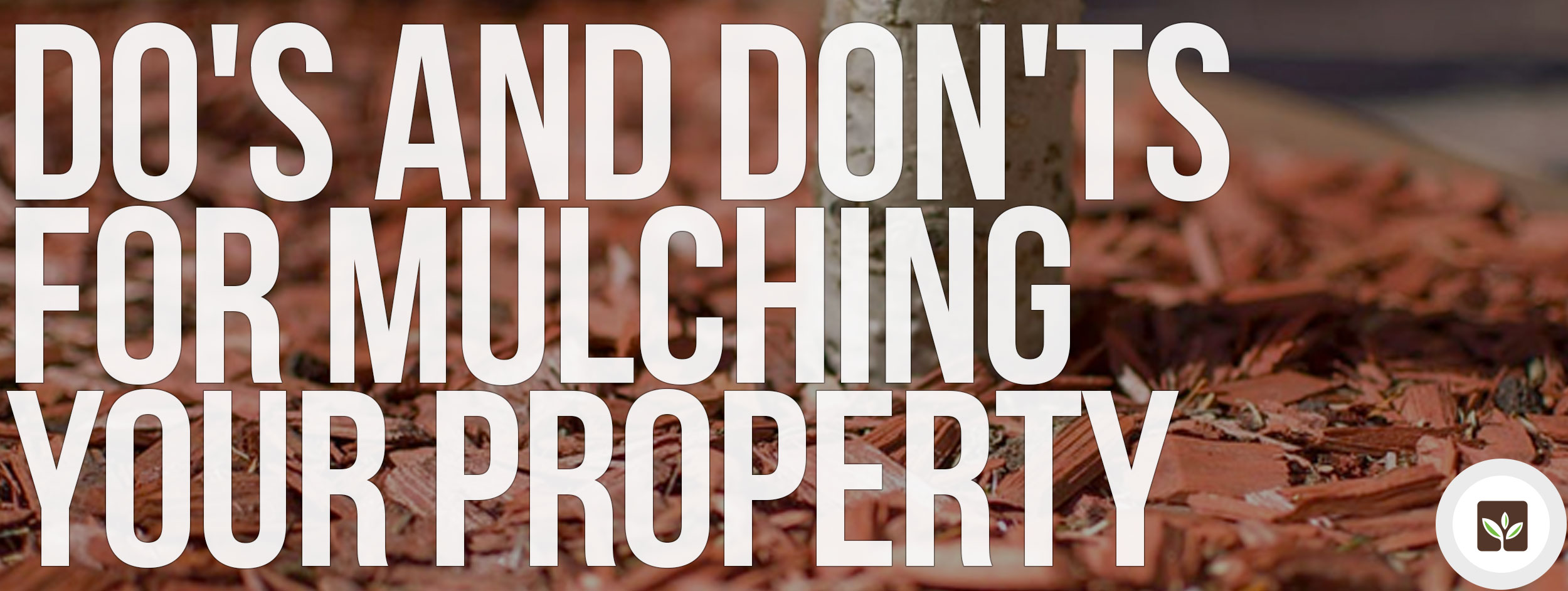
Do’s and Don’ts for Mulching Your Property
Mulch is a low-cost and effective solution to do everything from boosting curb appeal and accenting landscaping to conserving water, suppressing weed growth, adding a protective layer and reducing water runoff and soil erosion. Mulch is very beneficial for your plants and it can even improve safety around your property but mistakes when it’s installed can actually do the opposite: smothering plants, causing root rot, or leaving nothing but a soggy mess. Here are some important do’s and don’ts when mulching your landscape to enjoy the benefits of organic mulch without the drawbacks.
DO: Remove decomposed mulch before installing new mulch
Organic mulch breaks down over time. This can take anywhere from one to four years depending on the type of mulch you install. Don’t make the mistake of simply piling more mulch on top of the old every year. Remove the old mulch as much as possible from the surface or it can steal nitrogen from the soil, potentially starving your plants of nutrients. You should also check the depth of your existing mulch before adding a new layer to make sure you maintain the right depth of 2 to 4 inches.
DO: Consider mulch installation from a mulch blowing professional
Mulching your landscape doesn’t need to be done the old-fashioned way: with wheelbarrows, gloves, and shovels plus a lot of back pain and hours in the sun. Professional mulching can give you beautiful, flawless results without the mess or hassle, especially if you opt for blown-in mulch. Mulch blowing can give you seamless results without waste or mess in just a couple of hours, not days. This service involves just two technicians using a blower truck and long hose to deliver mulch directly where it needs to go, even in hard-to-reach areas.
DON’T: Apply too much mulch
The right amount of mulch will depend on where it’s applied. As a general rule, landscape mulch should be two to four inches thick. This is the perfect thickness to insulate plants, retain moisture in the soil, and regulate soil temperatures. This will help your plants thrive with fewer waterings, even during the hottest days of the summer. When installed on a playground to break falls, it should be six to twelve inches thick and should consist of a special type mulch specifically made for playground surfaces.
If mulch is applied in a very thick layer, it can cause more harm than good. Very thick layers of mulch increase the temperature of the ground and plant roots too much. A thick layer will also retain too much water and damage plant roots while preventing sunlight from reaching the ground. This will eventually cause root rot and starve the plants.
DON’T: Neglect trees
Your trees can also benefit from mulching just like landscape plants. Young trees get the most benefit from mulch because they are susceptible to drought and root rot. When you mulch a tree, you want to create a ring around the base without touching the trunk at all. Don’t create a mound or volcano of mulch by piling the mulch around the base. This causes a host of problems such as decay and fungus on the trunk from excessive moisture. It can also attract insects to the trunk and suffocate the tree’s roots.
Categories: Mulch Installation, South Carolina Mulch | Tags: Mulch Blowing, Mulch Installation Services, South Carolina Mulch